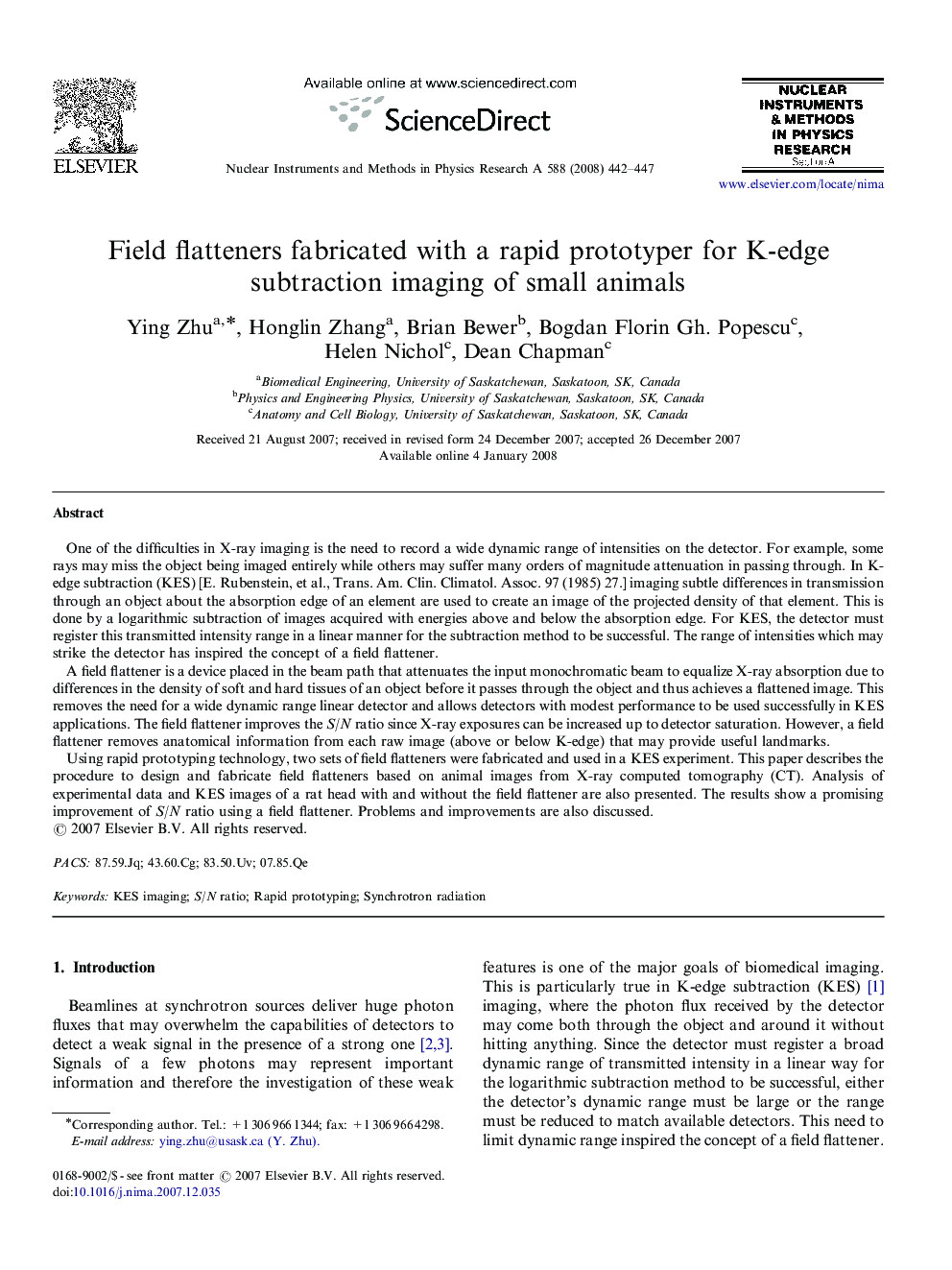| Article ID | Journal | Published Year | Pages | File Type |
|---|---|---|---|---|
| 1829387 | Nuclear Instruments and Methods in Physics Research Section A: Accelerators, Spectrometers, Detectors and Associated Equipment | 2008 | 6 Pages |
One of the difficulties in X-ray imaging is the need to record a wide dynamic range of intensities on the detector. For example, some rays may miss the object being imaged entirely while others may suffer many orders of magnitude attenuation in passing through. In K-edge subtraction (KES) [E. Rubenstein, et al., Trans. Am. Clin. Climatol. Assoc. 97 (1985) 27.] imaging subtle differences in transmission through an object about the absorption edge of an element are used to create an image of the projected density of that element. This is done by a logarithmic subtraction of images acquired with energies above and below the absorption edge. For KES, the detector must register this transmitted intensity range in a linear manner for the subtraction method to be successful. The range of intensities which may strike the detector has inspired the concept of a field flattener.A field flattener is a device placed in the beam path that attenuates the input monochromatic beam to equalize X-ray absorption due to differences in the density of soft and hard tissues of an object before it passes through the object and thus achieves a flattened image. This removes the need for a wide dynamic range linear detector and allows detectors with modest performance to be used successfully in KES applications. The field flattener improves the S/N ratio since X-ray exposures can be increased up to detector saturation. However, a field flattener removes anatomical information from each raw image (above or below K-edge) that may provide useful landmarks.Using rapid prototyping technology, two sets of field flatteners were fabricated and used in a KES experiment. This paper describes the procedure to design and fabricate field flatteners based on animal images from X-ray computed tomography (CT). Analysis of experimental data and KES images of a rat head with and without the field flattener are also presented. The results show a promising improvement of S/N ratio using a field flattener. Problems and improvements are also discussed.
